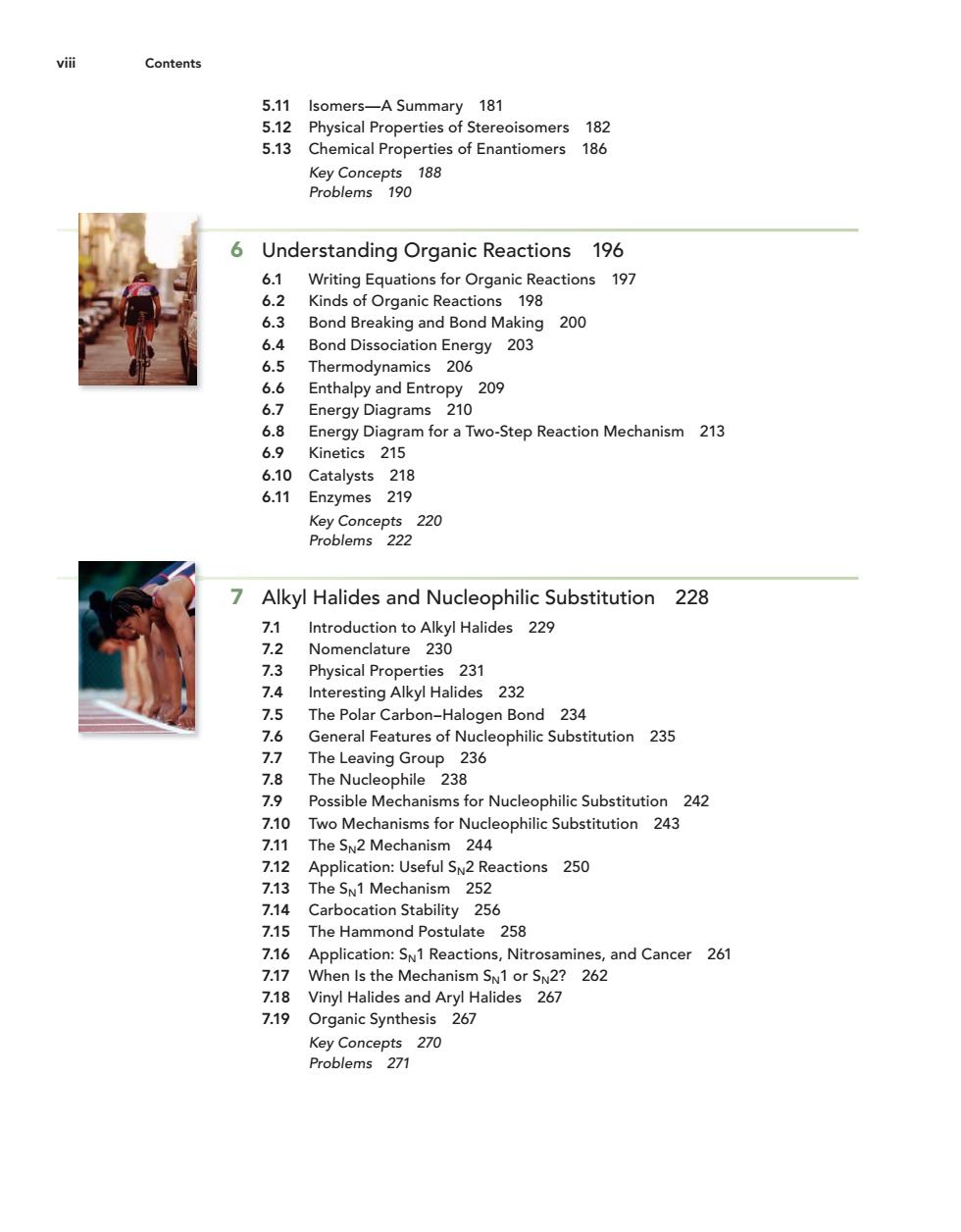正在加载图片...

Contents 5.11 Isomers-A Summary 181 5.12 Physical Properties of Stereoisomers 182 5.13 Chemical Properties of Enantiomers 186 genpt 188 Understanding Organic Reactions 196 刘記的 197 Bond Dissociation Energy 203 Thermodynamics 206 6.6 Enthalpy and Entropy 209 6.7 Energy Diagrams 210 6.8 Energy Diagram for a Two-Step Reaction Mechanism 213 6.9 Kinetics 215 6.10 Catalysts 218 611 Enzymes 219 Alkyl Halides and Nucleophilic Substitution 228 Introduction to Alkyl Halides 229 7233 Nomenclature 230 Physical Properties 231 Interesting Alkyl Halides 232 The Polar Carbon-Halogen Bond 234 治 General Features of Nucleophilic Substitution 235 The Leaving Gr 236 The nucle 238 242 Mechanisms for N The 2 sm Application:Useful SN2 Reactions 250 The SN1 Mechanism 252 7.14 Carbocation Stability 256 7.15 The Hammond Postulate 258 7.16 Application:SN1 Reactions,Nitrosamines,and Cancer 261 7.17 When Is the Mechanism SN1 or SN2?262 7.18 Vinyl Halides and Aryl Halides 267 7.19 rganic Synthesis 267 5.11 Isomers—A Summary 181 5.12 Physical Properties of Stereoisomers 182 5.13 Chemical Properties of Enantiomers 186 Key Concepts 188 Problems 190 6 Understanding Organic Reactions 196 6.1 Writing Equations for Organic Reactions 197 6.2 Kinds of Organic Reactions 198 6.3 Bond Breaking and Bond Making 200 6.4 Bond Dissociation Energy 203 6.5 Thermodynamics 206 6.6 Enthalpy and Entropy 209 6.7 Energy Diagrams 210 6.8 Energy Diagram for a Two-Step Reaction Mechanism 213 6.9 Kinetics 215 6.10 Catalysts 218 6.11 Enzymes 219 Key Concepts 220 Problems 222 7 Alkyl Halides and Nucleophilic Substitution 228 7.1 Introduction to Alkyl Halides 229 7.2 Nomenclature 230 7.3 Physical Properties 231 7.4 Interesting Alkyl Halides 232 7.5 The Polar Carbon–Halogen Bond 234 7.6 General Features of Nucleophilic Substitution 235 7.7 The Leaving Group 236 7.8 The Nucleophile 238 7.9 Possible Mechanisms for Nucleophilic Substitution 242 7.10 Two Mechanisms for Nucleophilic Substitution 243 7.11 The SN2 Mechanism 244 7.12 Application: Useful SN2 Reactions 250 7.13 The SN1 Mechanism 252 7.14 Carbocation Stability 256 7.15 The Hammond Postulate 258 7.16 Application: SN1 Reactions, Nitrosamines, and Cancer 261 7.17 When Is the Mechanism SN1 or SN2? 262 7.18 Vinyl Halides and Aryl Halides 267 7.19 Organic Synthesis 267 Key Concepts 270 Problems 271 viii Contents smi75625_fm_00i-xxxiv.indd viii 11/17/09 11:21:13 AM